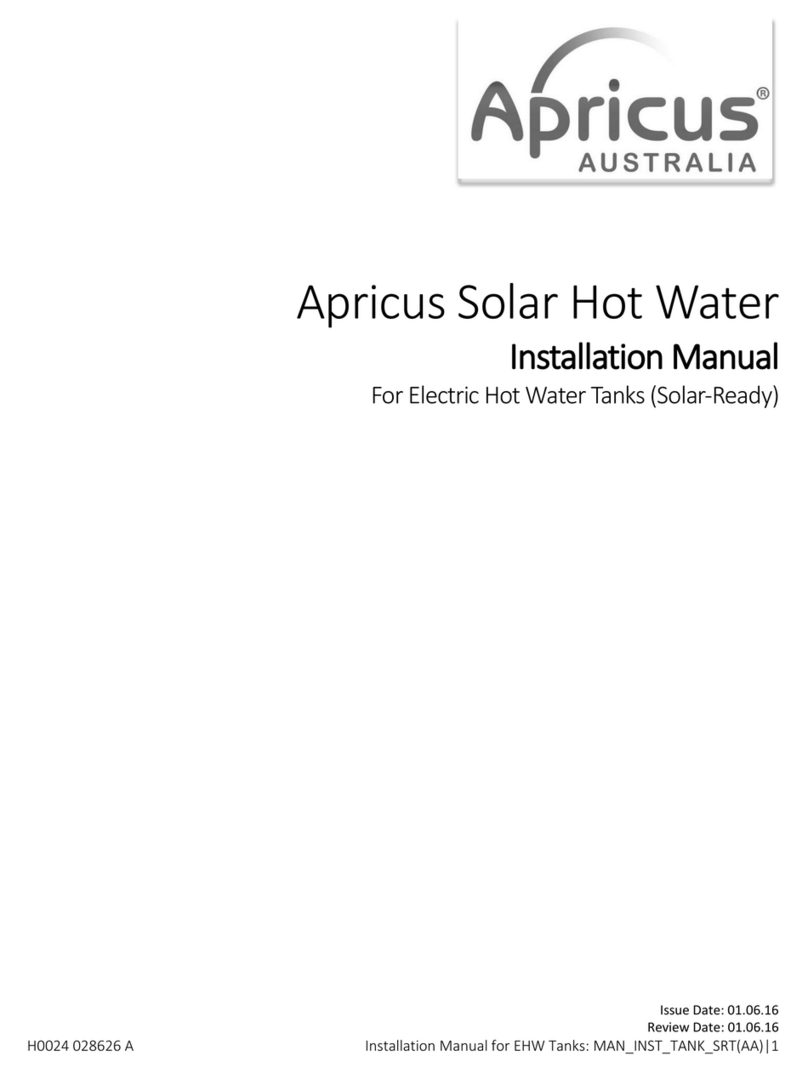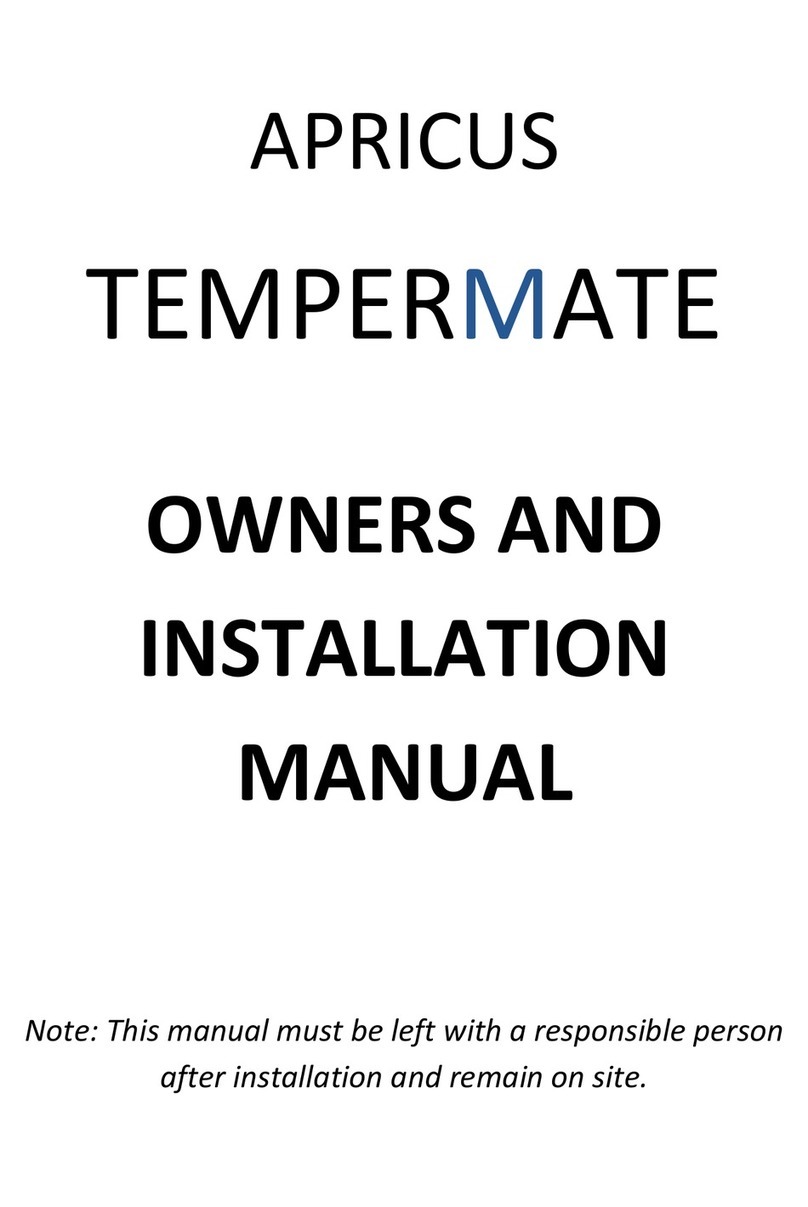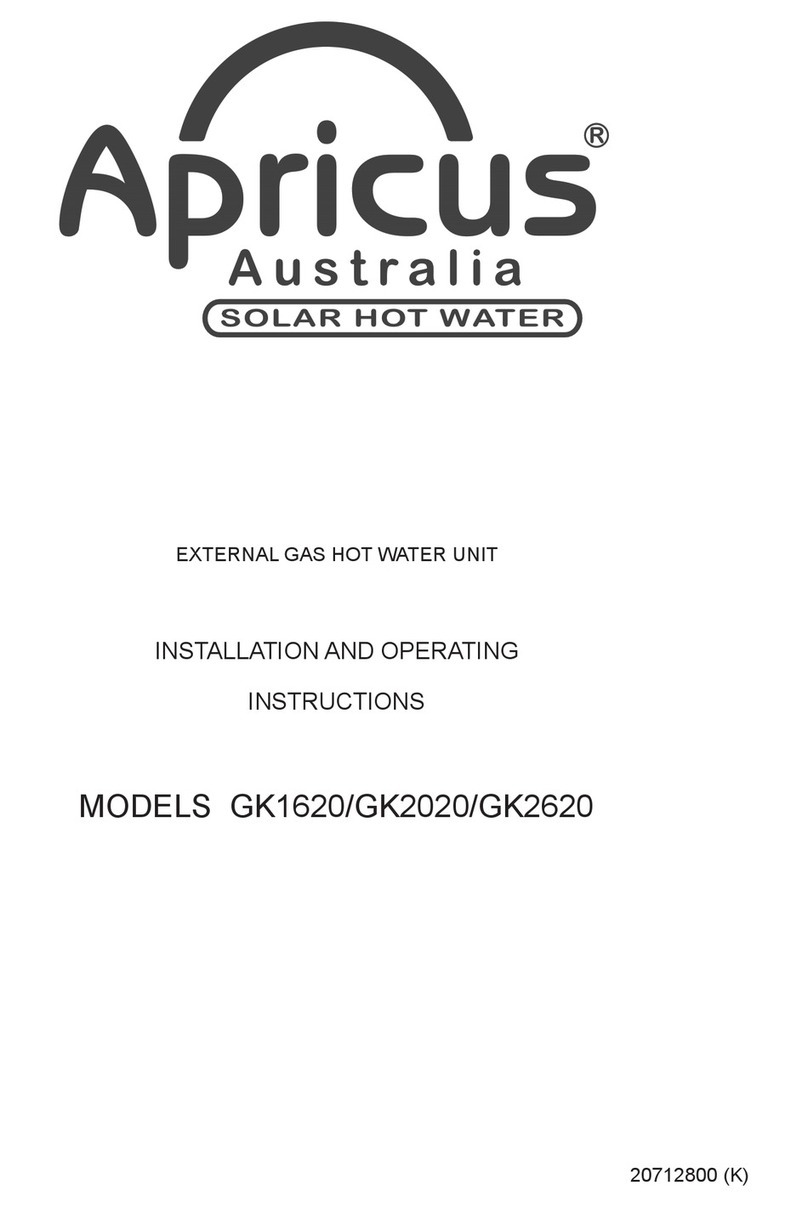
Owner’s Guide and Installation Manual for Heavy Duty Electric Water Heaters|6
2. Installation and Site
Inspection
Installation Standards
This water heater shall be installed with the
following requirements:
In accordance with the Apricus Heavy Duty
Electric Water Heaters Installation Manual
In compliance with the relevant standards
AS/NZS 3500.4, AS/NZS 3000 and all local
mandatory, regulatory requirements.
Installation carried out by qualified
person(s).
The water heater must be installed only after
completing site inspection, refer to the sections
below in this Chapter for details.
Water Heater Application
Use with Potable Water
The heavy duty electric water heaters are
designed for use with potable water, using
alternative fluids may reduce the lifetime of
the water heater.
Continuous hot water load
Should the site require a continuous flow of
hot water, the system design must incorporate
redundancy to allow for the scenario where a
water heater may cease to perform as it
normally should for any reason and requires
servicing or maintenance. A back-up water
heater can ensure the continuous supply of
hot water in such cases.
Using the Water Heater in Circulated Flow and
Return Setup
Should the water heater(s) need to be set up
to circulate through the ring main of the
building/site with flow and return, it must be
verified that the water heater thermostat is set
to a minimum of 60oC.
Using the Water Heater as an in-line booster
In such a setup, hot water from a hot water
circuit is fed to the heavy duty electric water
heater that activates to boost the water to a
higher desired temperature. Ensure that
isolation valves are used on the water heater’s
inlet and outlet lines.
This water heater is not suitable for use with pool
heating applications.
Storage Tank Location
Position the Water Heater near Draw Off Points
The storage tank should be located as close as
possible to the most frequent draw off points
in the building such as the bathroom or
kitchen. If the storage tank is located a long
way from hot water draw points, a hot water
circulation loop on a timer may be considered
to reduce the time-lag for water to heat up
and resultant water wastage.
Avoid Obstructions
The tank should not obstruct any windows,
doors or exits and should cause minimal
intrusion to the existing site (minimum
clearances between the rear of the water
heater and wall is 100mm). The water heater
must also be easy to access for servicing and
maintenance purposes (minimum of 900mm
from the front of water heater), with the labels
clearly visible. Should the water heater be
installed outdoors, ensure that the rear side is
against a solid wall with the relevant clearance.
Anodes
For glass-lined tanks, considerthe requirement
of anode removal and replacement
maintenance.
Safe Trays
The storage tank may be installed in a safe tray
that complies with AS/NZS 3500.4 and all local
codes and regulatory authority requirements
with regards to its construction, installation
and draining. Tanks installed outside must be
installed on a suitable, level concrete slab,
away from pooling water.
Transportation of Components
When transporting boxes, note the orientation
of the "THIS WAY UP" arrows.































